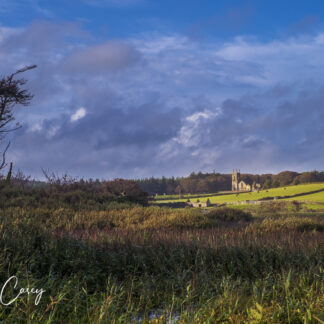Description
The name Guagán Barra comes from Saint Finnbarr (or Barra), who is said to have built a monastery on the island in the lake during the sixth century. The present ruins of a hermitage date from around 1700, when a priest called Denis O’Mahony retreated to the island. During the times of the Penal Laws, Gougane Barra’s remoteness meant that it became a popular place to celebrate the Roman Catholic Mass. The nineteenth-century oratory, which stands near the original hermitage, is famous for its picturesque location and richly decorated interior and is a popular place for weddings and photography. St Finbar’s Oratory is the final destination for one of the five Pilgrim Paths of Ireland, St Finbar’s Pilgrim Path, which starts 35 kilometres away in Drimoleague.
Reforestation of Gougane Barra began in 1938, and it is now home to a 1.42 square kilometre (or 138 hectares) forest park with twenty tree species, mainly non-native Sitka spruce, Japanese larch and Lodgepole pine, but also Scots pine and other native species of flora and fauna. The source of the River Lee rises in the hills above the park and flows into Gougane lake. The forest park has 5 km of motor trails and 10 km of hill walks, nature points and vista trails. The Coillte-owned forest at Gougane Barra was temporarily closed in 2014 to allow the felling of 16,000 trees, primarily larches, infected with or susceptible to Phytophthora ramorum, a pathogen responsible for Sudden Oak Death. These trees were to be replaced with native species such as oak and Scots pine.
See another shot of Gougane Barra here.








Reviews
There are no reviews yet.